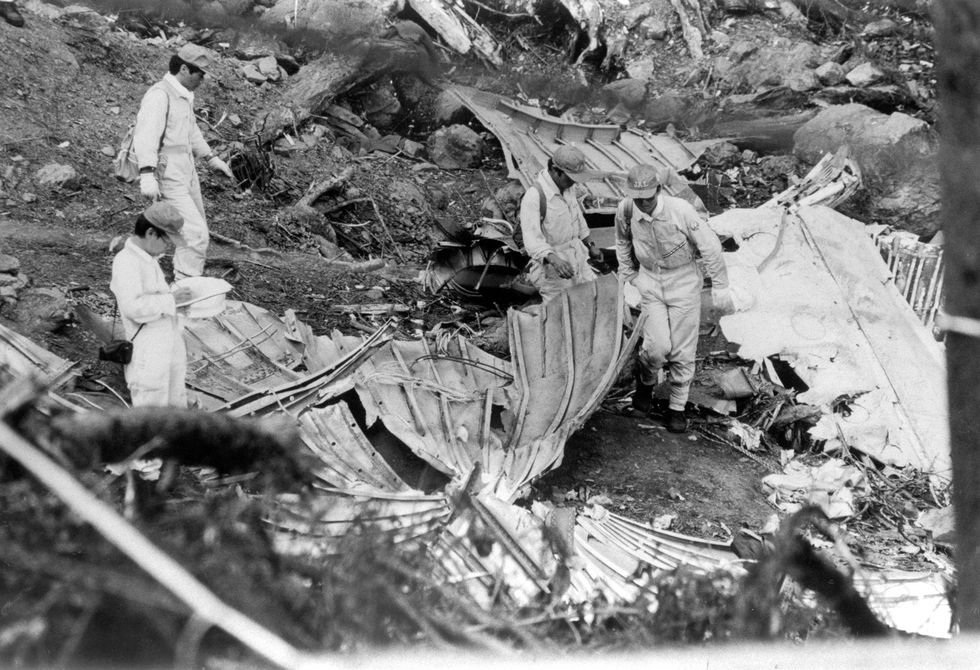
Exploding Air Crash: The Untold Story of JAL Flight 123 Disaster
Contents:
- Introduction
- Background of Japan Airlines Flight 115
- The Initial Accident and Repair
- The Fatal Error in the Repair Work
- The Fateful Flight of Japan Airlines Flight 123
- The Inevitable Crash and Tragic Aftermath
- Controversies and Investigations
- The Blame Game: Boeing or Japan Airlines?
- Lessons Learned from the Tragedy
- Conclusion
Introduction
The tragedy of Japan Airlines Flight 123 is one that will forever be etched in the annals of aviation history. On August 12th, 1985, this ill-fated flight suffered a catastrophic decompression event just minutes after takeoff, leading to the loss of 520 lives. The accident was not a sudden, random occurrence, but rather the result of a series of errors and oversights that began seven years earlier. This article will Delve into the background of Japan Airlines Flight 115, the initial accident and repair, the fatal error in the repair work, the fateful flight of Japan Airlines Flight 123, the inevitable crash and its tragic aftermath, controversies and investigations surrounding the incident, the blame game between Boeing and Japan Airlines, and the lessons learned from this devastating tragedy.
Background of Japan Airlines Flight 115
Japan Airlines Flight 115 was a Boeing 747 aircraft specifically designed for Japan’s crowded short-haul domestic routes. Despite the seemingly unconventional choice of using a super jumbo for short flights, the high demand between Tokyo and Osaka necessitated the use of such large planes. On June 2nd, 1978, during the final approach to Osaka’s Itami Airport, Flight 115 experienced a botched landing, causing substantial damage to the rear section of the plane. While the landing was eventually successful, the damage incurred would set in motion a chain of events that would lead to the ultimate tragedy seven years later.
The Initial Accident and Repair
The botched landing at Osaka’s Itami Airport caused extensive damage to the tail section of the Boeing 747. However, instead of scrapping the aircraft, Japan Airlines made the decision to repair it. The most challenging aspect of the repair work was the rear pressure bulkhead, a structural division between the pressurized and unpressurized sections of the aircraft. Rather than replacing the entire bulkhead, a decision was made to replace only the damaged lower section. The repair team encountered a problem when they realized there was insufficient space for two rows of rivets in the narrow overlap. To resolve this issue, a splice plate was used, but a critical error was made during its installation.
The Fatal Error in the Repair Work
Instead of using one continuous splice plate, the repair team cut the plate into two separate sections and riveted them to the bulkhead. As a result, the upper seam was attached with only one row of rivets, significantly weakening the structural integrity of the rear pressure bulkhead. This error went unnoticed during inspections as the area had been sealed and the flawed repair Hidden from view. Unbeknownst to the crew and passengers, the repaired bulkhead became a ticking time bomb that would lead to the catastrophic failure of Flight 123.
The Fateful Flight of Japan Airlines Flight 123
On August 12th, 1985, Japan Airlines Flight 123 took off from Tokyo’s Haneda Airport, headed for Osaka. What seemed like a routine flight quickly turned into a nightmare when, just 12 minutes into the Journey, the rear pressure bulkhead failed. The decompression event caused a massive Wave of pressurized air to blow apart the bulkhead, creating an explosion-like effect in the tail section. The plane lost its tail fin, hydraulic control lines were severed, and the cabin depressurized.
The Inevitable Crash and Tragic Aftermath
With the loss of control surfaces and hydraulic pressure, the crew of Flight 123 had no means to control the aircraft. Despite their valiant efforts, they were unable to regain control as the plane entered a turbulent and erratic flight path. The crippled aircraft eventually clipped the top of a forest ridge, flipped upside down, and crashed into a hillside. The impact resulted in a massive fireball, with debris scattered across the mountain. Of the 524 individuals on board, only four survived the initial crash. The aftermath was marked by shock, grief, and sorrow, as rescue teams scrambled to the crash site and attempted to recover the victims.
Controversies and Investigations
In the aftermath of the crash, investigations were conducted to determine the cause of the tragedy. However, controversy and bureaucratic obstacles hindered the process. The investigation failed to provide a satisfactory answer as to why the repair work on the rear pressure bulkhead was poorly executed. The blame game between Boeing and Japan Airlines added another layer of complexity to the investigation, leaving many unanswered questions.
The Blame Game: Boeing or Japan Airlines?
Determining who was ultimately responsible for the tragedy of Flight 123 remains a contentious issue. While Japan Airlines took responsibility for the disaster and made internal changes, the exact role played by Boeing and their potential negligence remains unclear. The lack of a definitive answer has left many seeking justice and closure.
Lessons Learned from the Tragedy
The crash of Japan Airlines Flight 123 served as a wake-up call for the aviation industry. It highlighted the importance of rigorous maintenance practices, thorough inspections, and proper repair procedures. The tragedy prompted improvements in aircraft design, maintenance protocols, and safety regulations to prevent similar incidents from occurring in the future.
Conclusion
The tragedy of Japan Airlines Flight 123 serves as a haunting reminder of the grave consequences that can arise from a series of errors and oversights. The botched repair work on the rear pressure bulkhead, coupled with the subsequent catastrophic decompression event, led to the loss of hundreds of lives. This devastating incident sparked a global investigation and prompted changes within the aviation industry to prevent similar disasters. It remains a solemn reminder of the importance of prioritizing passenger safety above all else.





